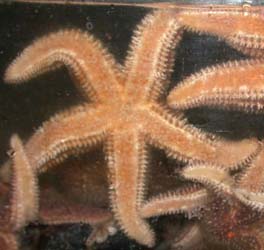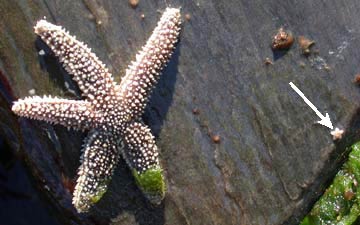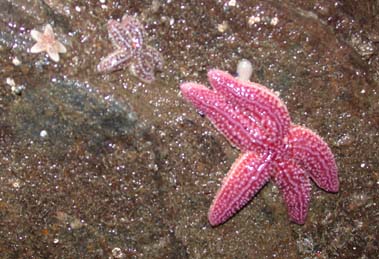Sea stars (also known as starfish) are in
the class Asteroidea in the phylum Echinodermata, and there are over 2,000
different species worldwide. Like most echinoderms, sea stars generally
have a 5-part symmetry. Most sea stars have 5 arms (or a multiple of 5)
arranged around a central disk, and the mouth is located in the center
of this disk on the underside (called the oral surface).





